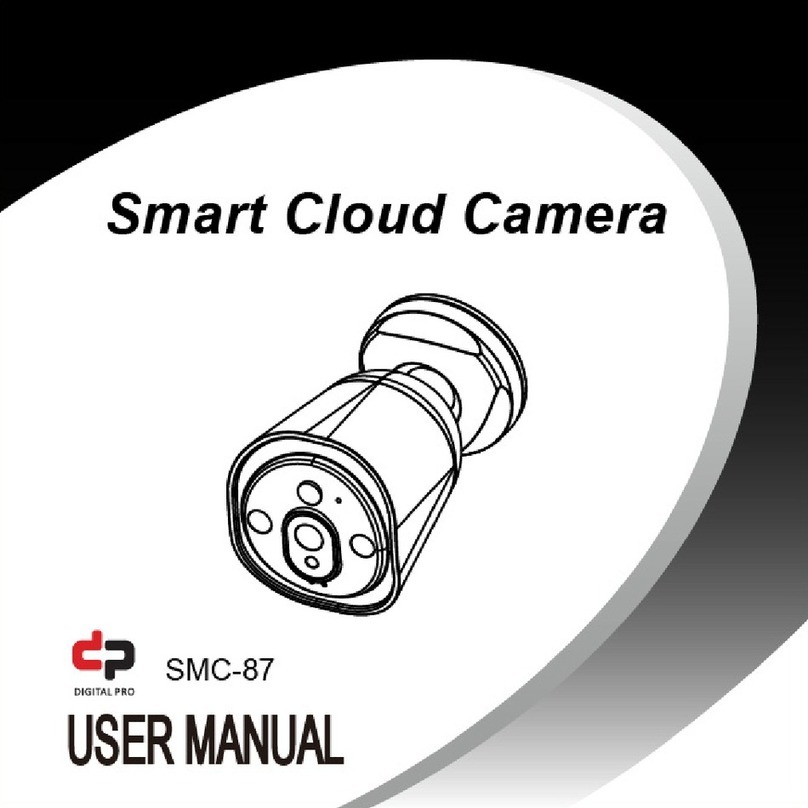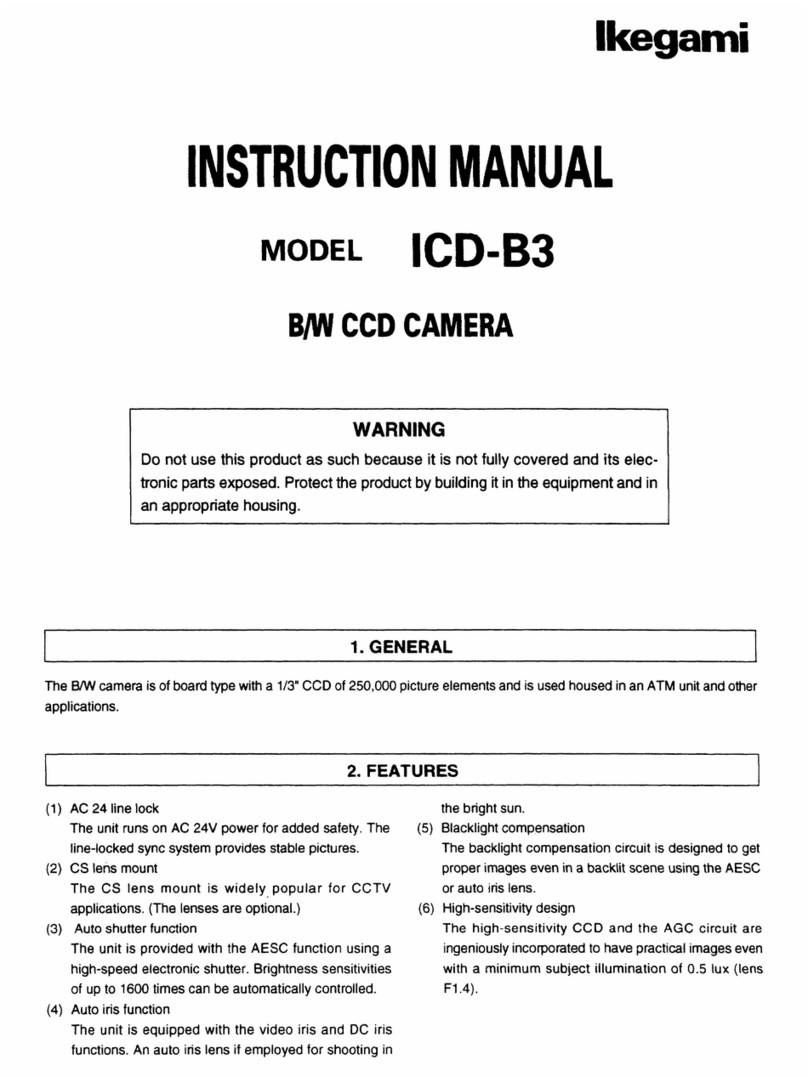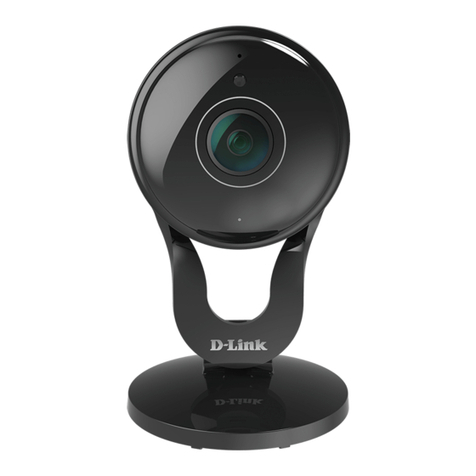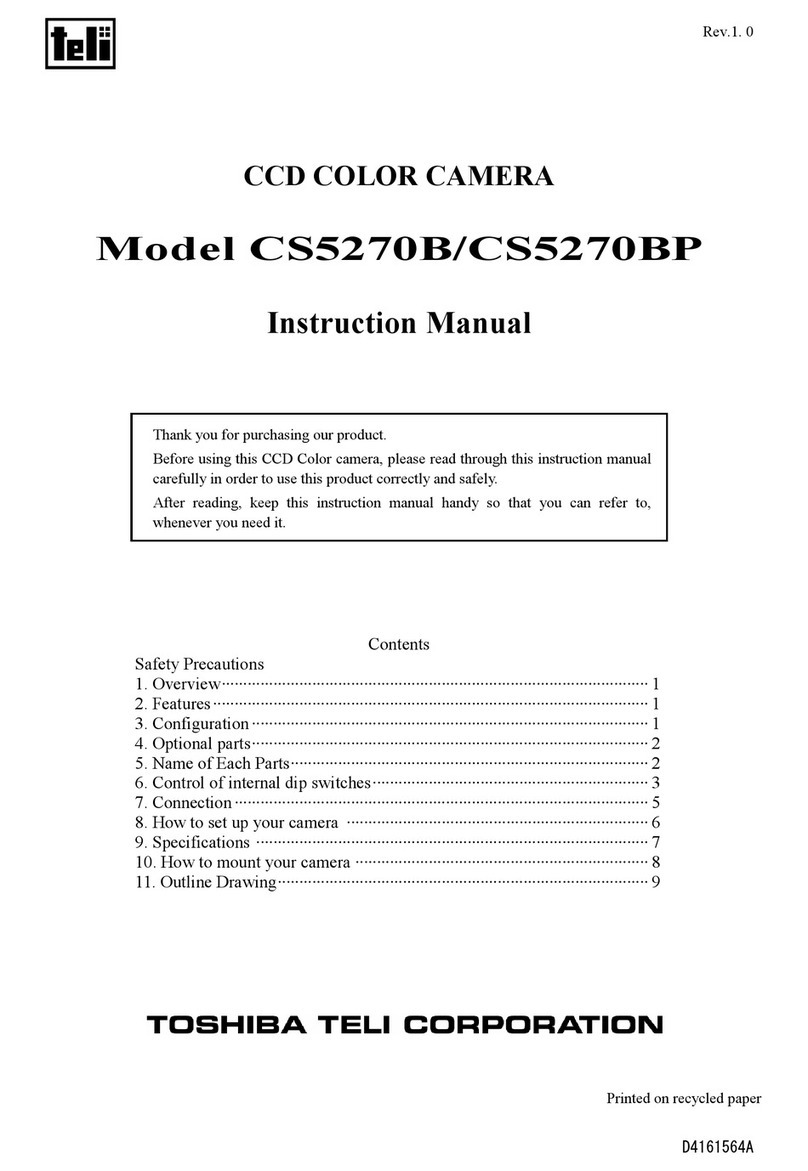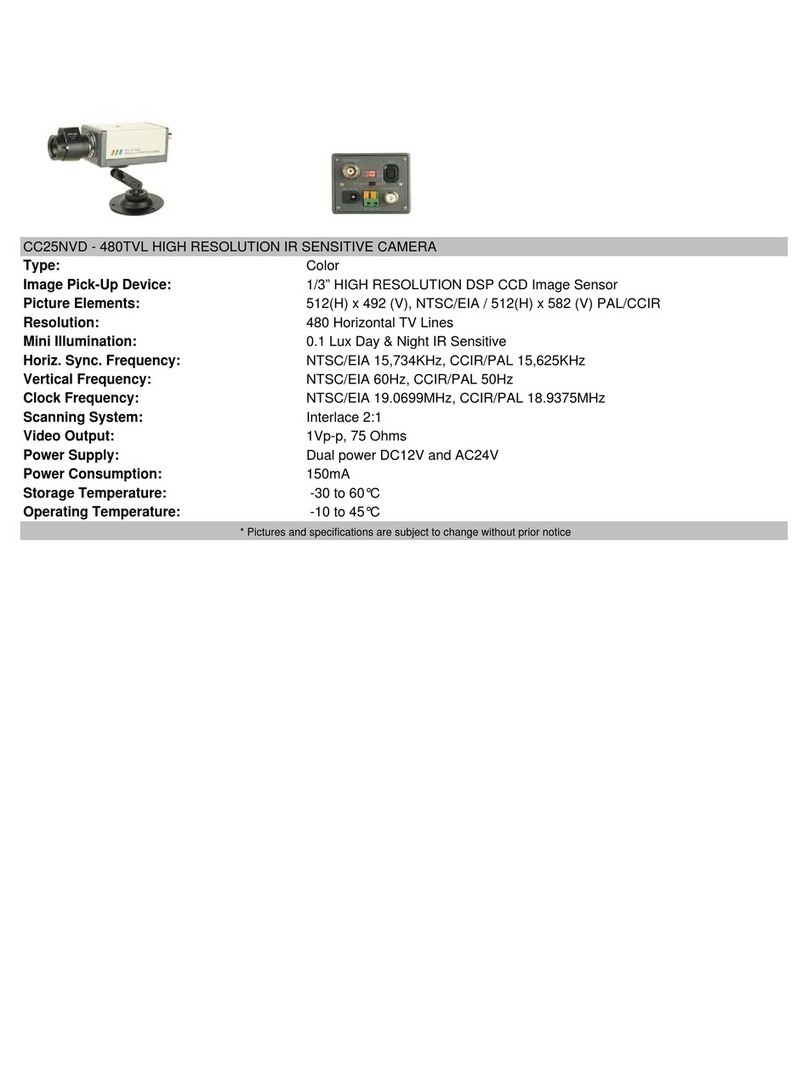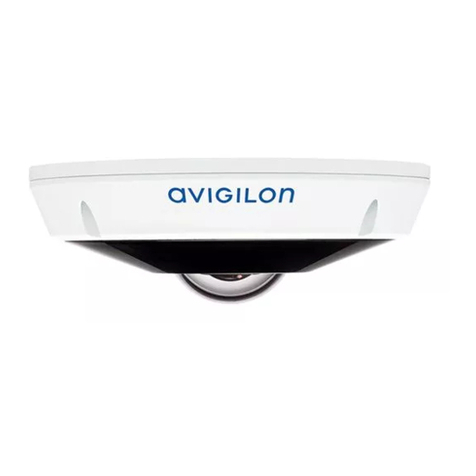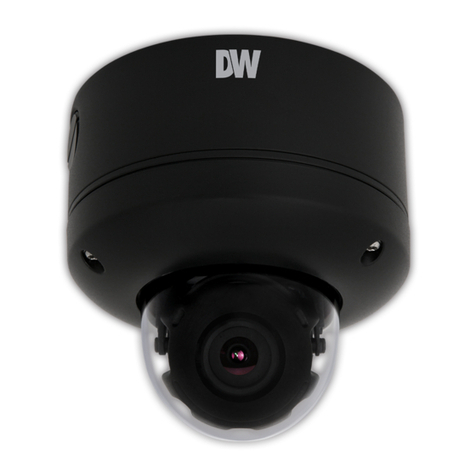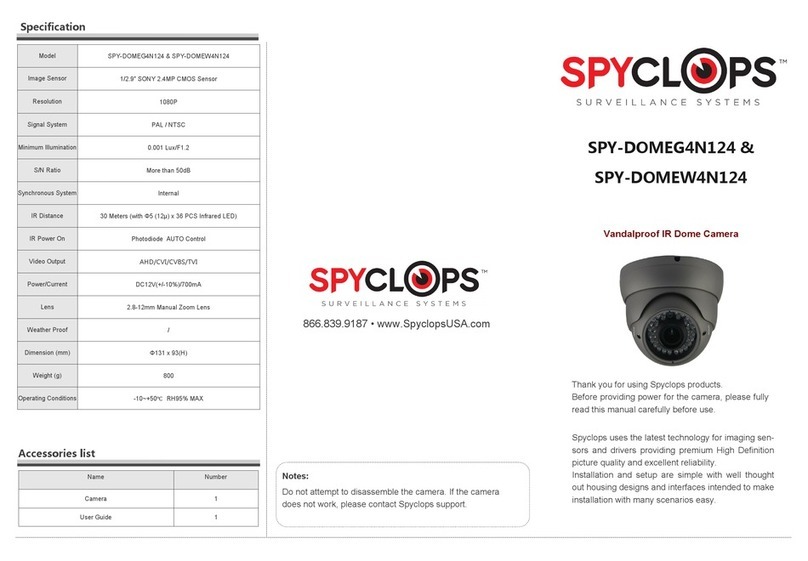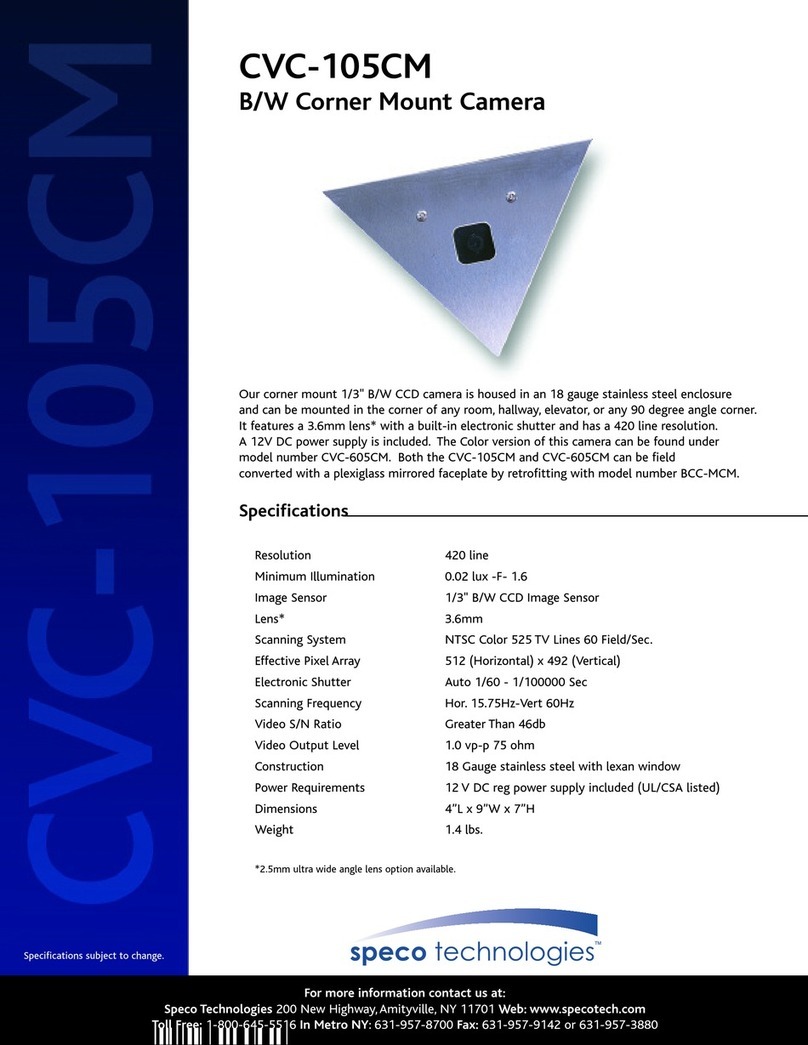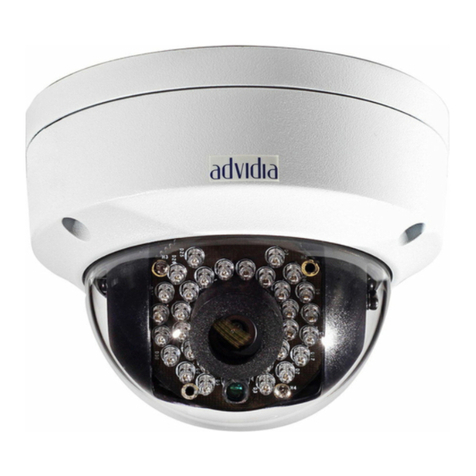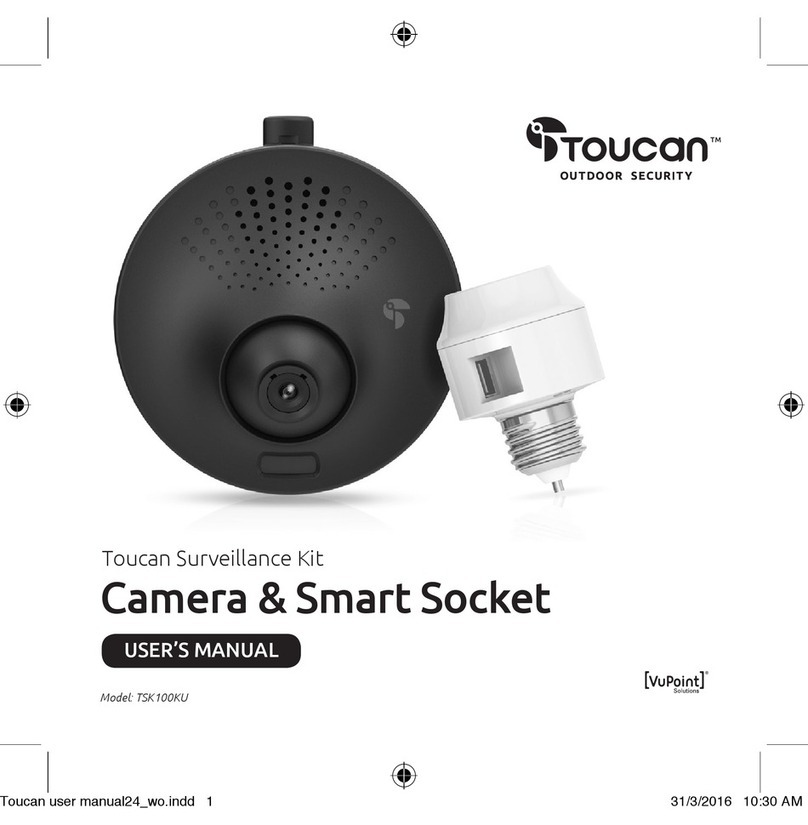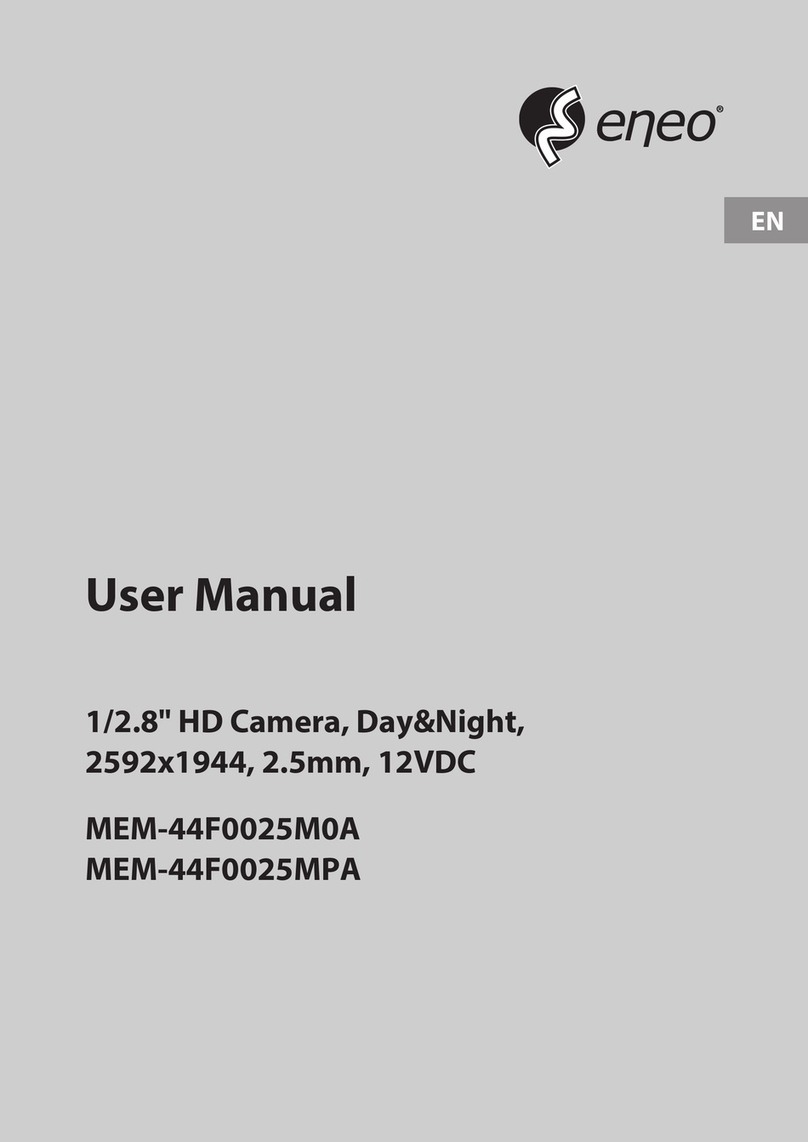CiA TVCD606 User manual

Installation and Operation Manual
for
TVCD606

2
Please read the operation manual carefully
before installing and using this unit

1
I. Points for Attention
1. Before installing the omni bearing intelligent unit, please read the operation
manual carefully.
2. The camera takes power supply of DC12V/1.2A. You should assure that the power
supply of the product has an input voltage with load about 12V rather than a
unload voltage of 12V, otherwise the camera couldn’t work normally.
3. During the process of transportation, storage and installation, the dome should be
avoided of incorrect operations such as heavy pressing, strong vibration etc. which
can cause damage of product as there are sophisticated optical and electronic
devices inside the machine.
4. Do not attempt to disassemble the camera. In order to prevent electric shock, do
not remove screws or covers. There are no user serviceable parts inside and only
qualified personnel are to service the unit
5. Always follow all electrical standards for safety when it is in operation. Adopt the
particular power supply, which is provided with the dome. RS-485 and video
signal should keep enough distance with high voltage equipments and cables
when they are in transmission. Precautions for anti-lightning and anti-surging
should be taken if necessary.
6. The product should be indoor installed and operated to avoid rain and moisture. Do not use it
in wet places. If outdoor installation is needed, the closed protect cover should be used and it
is absolutely prohibited to use it in open air independently.
7. Do not operate it in case temperature, humidity and power supply are beyond the
limited stipulations.
8.Do not let the video camera aim at the sun or the object with extreme light
whatsoever it is switched on or not. Do not let the video camera aim at or monitor
bright and standstill object for a long time.
9. Do not use aggressive detergent to clean the main body of the video camera.
Wipe dirt with dry cloth. If needed, mild detergent can be used suitably.
10. Operate the intelligent high-speed spherical video camera with great care to
avoid shock or vibration. It operate incorrectly, machine could be damaged.
11. Install the video camera in the place where endurance should be enough large.
12. Should be dust on the lens, you should wipe it with special lens tissue.

2
II. Description of Functions
The dome camera is a hi-tech CCTV product, which incorporates color TV, omni
bearing dome P/T and multifunctional decoder into a whole. It can largely reduce
connection and installation processes of components in the system, rise up reliability
of the system and facilitate installation and maintenance. Therefore it has advantages
of beautiful appearance, compact structure and easy operation.
1. Integrated Multi-Protocol Decoder
a. With built-up decoder and integrated multi-protocol, it can integrate 16 kinds
of communication protocols in maximum. As its baud rate of communication
can be adjusted, it is compatible with main domestic and foreign systems by
easy setting inside the spherical camera, so it has stronger versatility.
b. RS485 serial control: addresses of the dome camera 1-1023.
2. Integrated Omni bearing dome P/T
a. Turning 360ºhorizontally and continuously with unlimited positions. PAN
speed range:0~15rad/s (constant speed dome PAN: 15rad/s); turning 0~90º
vertically with a speed 0~15rad /s(constant speed dome TILT: 15rad/s).
b. Running stably at low speed with super lower noise. Pictures have no
shaking.
c. the location precision up to ±0.2°.
3. High Intelligent Degree
a. Support the dome camera to scan horizontally between two points and scan
speed can be modified.
b. Data can be stored with powerless memory.
4. Newly-Added Functions
a. Flexible and Convenient Application: there are many communication
protocols integrated inside the spherical camera and the baud rates can be
selected from 24000 bps to 19200 bps.
5. Selectable Optical Zoom Range of Camera
Times of Optical
Zooming Focus Range Lowest Illuminance
16x f3.9-f6.3 mm 1 Lux (F1.4)
18x f4.1-f73.8 mm 1 Lux (common type) / 0.01 Lux(day & night type)
22x f4-f88 mm 0.2 Lux(F1.6 1/3s)
23x f3.6-f82.8 mm 1 Lux (Common type) / 0.01 Lux(day & night type)
25x f3.6-f90 mm 1 Lux (Common type) / 0.01 Lux(day & night type)

3
III. Settings of Special Camera
Before installing the spherical camera, please confirm the communication protocol
and baud rate the master controler in the system uses, then set the coding switches on
the back of the camera to be identical with that of the system in which SW1 is for
address of the spherical camera and SW2 is for communication protocol and baud rate
(see attached tables 1,2 and 3).
31 2
JP
Pr ot ocol Sel ect
ON
1234 5 678 910
SW1
Speed Dome Addr ess Sel ect
ON
1234 5 6
SW2
120Ω termi nal resi stor i s connected on RS485 Bus
120Ω termi nal resistor i s opened f or RS485 bus
JP
31 2ID-CODE S e t
Sy s t e m
cont r ol wi r e
JP1 is jumper for the terminal resistor
JP1 is the 120 Ωterminal resistor for RS485 Bus. When short-circuit terminal is set between
“1-2”, the 120 Ωterminal resistor is opened while it is set between “2-3”, the resistor is
connected. Take care that on RS 485 Bus only one farthest spherical camera has the terminal
resistor connected while other devices should have their terminal resistors opened.
zSettings of Addresses of dome Cameras
States of Coding SwitchesDome
Addres
s DIP-
1
DIP-
2
DIP-
3
DIP-
4
DIP-
5
DIP-
6
DIP-
7
DIP-
8
DIP-
9
DIP-1
0
1 ON OFF OFF OFF OFF OFF OFF OFF OFF OFF
2 OFF ON OFF OFF OFF OFF OFF OFF OFF OFF
3 ON ON OFF OFF OFF OFF OFF OFF OFF OFF
4 OFF OFF ON OFF OFF OFF OFF OFF OFF OFF
5 ON OFF ON OFF OFF OFF OFF OFF OFF OFF
6 OFF ON ON OFF OFF OFF OFF OFF OFF OFF
7 ON ON ON OFF OFF OFF OFF OFF OFF OFF
8 OFF OFF OFF ON OFF OFF OFF OFF OFF OFF
9 ON OFF OFF ON OFF OFF OFF OFF OFF OFF
10 OFF ON OFF ON OFF OFF OFF OFF OFF OFF
11 ON ON OFF ON OFF OFF OFF OFF OFF OFF
12 OFF OFF ON ON OFF OFF OFF OFF OFF OFF
13 ON OFF ON ON OFF OFF OFF OFF OFF OFF
14 OFF ON ON ON OFF OFF OFF OFF OFF OFF
15 ON ON ON ON OFF OFF OFF OFF OFF OFF
16 OFF OFF OFF OFF ON OFF OFF OFF OFF OFF
17 ON OFF OFF OFF ON OFF OFF OFF OFF OFF
18 OFF ON OFF OFF ON OFF OFF OFF OFF OFF
……………………………
1023 ON ON ON ON ON ON ON ON ON ON

4
Table 1
For Example:
Speed Dome Addr ess=1
ON
1234 5 6
78910
Speed Dome Addr ess=2
ON
1234 5 6
78910
Speed Dome Addr ess=3
ON
1234 5 6
78 910
Speed Dome Addr ess=4
ON
1234 5 6
78910
Speed Dome Addr ess=18
ON
1234 5 6
78910
Sp e e d Do me Addr ess=1023
ON
1234 5 6
78910
Notes:
1. Addresses of the dome cameras are denoted by binary code system. ON means
“1” while OFF means “0”.
2. Above coded addresses are only from no.1 to no.20. The codes of addresses from
no.21 to no.1023 can be deduced by analogue.
3. The range of addresses of the spherical cameras is from 1 to 1023.
zSettings of communication protocol of the dome camera (DIP1-DIP4 of SW2)
and its default baud rate (DIP5-DIP6 of SW2). In case the default baud rate of the
dome camera is not in accordance with that of the controller, please reset it as per
the Table 3 (●means the protocol has been done).
Selection of Protocols Normal Baud Rate
Type of Protocols DIP-1 DIP-2 DIP-3 DIP-4 DIP-5 DIP-6
Integrated
Protocol
Minking A01 OFF OFF OFF OFF ON OFF ●
Minking B01 ON OFF OFF OFF OFF ON ●
Santachi OFF ON OFF OFF OFF ON ●
PELCO-D ON ON OFF OFF OFF OFF
●
PELCO-P/4800 ON OFF
PELCO-P/9600 OFF OFF ON OFF OFF ON ●
PANASONIC ON OFF ON OFF OFF ON ○
Longcomity OFF ON ON OFF OFF ON
●
HUNDA600 ON ON ON OFF OFF ON
●
LILIN OFF OFF OFF ON ON OFF
○
VICON ON OFF OFF ON ON OFF
○
MOLYNX OFF ON OFF ON OFF ON ○
KALATEL ON ON OFF ON ON OFF ○
VCL OFF OFF ON ON OFF ON ○
DAIWA ON OFF ON ON OFF ON ○
ALEC OFF ON ON ON OFF ON
○
Utralk ON ON ON ON OFF ON
○
Table 2
Protocols mentioned above are suitable for the dome camera. Among them “Santachi”,
“ PELCO-D” and “PELCO-P” have no corresponding orders for some special
functions in the protocols. In order to control some special functions of the spherical
camera, we make some functional transformation upon some common orders.
Normally we take “Call Preset Position / Set Preset position” to transform, and
contents of order transformation are listed below.

5
Definition of Keypad Operation
Number
of N
Value
Control Object
Call No. N Preset Point Set No. N Preset Point
51 Start Scan (low Speed) Start Patrol
52 Start Scan (middle Speed) Set Start Position of Scan
53
Supplementary Control of
dome Start Scan (high Speed) Set End Position of Scan
54 Power Supply of Camera Power Supply On Power Supply Off
55 BLC On Off
56 Zero Illuminance On Off
57 Screen Display * On Off
58 D-Zoom On Off
59 Focus Automatic Manual
60 Iris Automatic Manual
61 Automatic Manual
62 Interior Exterior
63
Mode of White Balance *
ATW One Push WB
64
Notes:
1. Those Items with “*” have memory function even the dome is switched off.
2. For those cameras with “menu”, you can use “Screen Display ON” to control the
Menu ON/OFF, and use “Screen Display OFF” to control Screen Display
ON/OFF.
3. For those cameras which have no “Zero Illuminance” or the function of “Zero
Illuminance” is automatically switched without control, then above “Zero
Illuminance” is invalid.
4. Notes to “Patrol” Function of the dome camera:
①Automatically scan from no.1 to no.16 preset points one by one. If some
points do not have been preset or are cleared out after presetting, they will be
bypassed when patrol is carrying out.
②The dwelling time between to preset points is 4 seconds.
③The “Patrol” function of the dome camera can be carried out by presetting
no.51 position.
5. Notes to “Scan(auto pan)” Function of the dome camera:
①The dome camera makes automatic scan between two specified positions.
②The speeds of scan are divided into three levels. You can call no. 51, 52 and
53 preset position to start scan at speed of 1.5°/ sec, 5°/ sec and 10°/ sec
separately.
③The dwelling time between the “Start Point” and “End Point” of scan is 3
seconds.
6. All notes mentioned above are supplementary descriptions under high speed. All original
operations of the control system are unchanged.
zSettings of Communication Baud Rate of the dome Camera

6
IV. Steps of Installation
1. M ounting Base
2. Outer Tube
3. Shading Cover
4. Outer Cover
5. Camera
6. Connecti ng Cabl e
Dimension Drawing
1. Carefully read the operation manual and the points for attention.
2. Carefully set the communication code, baud rate and address of the dome camera
and make confirmation they are correct.
3. Take out the plug of the dome camera and connect external power supply, RS485
and video wires as per marks on the plug. Take care that the power supply of the
dome camera is DC12V/1.2A and adopt the particular power supply which is
provided with the dome camera.
Red : DC12V+
Black : GND
Orange : RS485+
Yellow : RS485-
VIDEO
.
4. Take out the mounting base from the spherical camera, thread the connecting
wire from behind through the central hole of the base. Fix the base by three
screws on the ceiling as per the drawing, and connect the wire with the ball. Aim
the latch in the ball with the notch on the base as per the drawing, and mount the
ball upward to the position and turn it clockwise until the spring sheet on the
base takes effect. In case the wire could not come out from behind the ceiling,
you can open a hole on the edge of the casing for running of the wire.
CodingSwitch
Baud Rate 1 2 3 4 5 6
2400 bps OFF OFF
4800 bps ON OFF
9600 bps OFF ON
19200 bps ON ON

7
Installation Drawing
V. Main Technical Data
Image
Inductor 1/4″Color CCD
Effective
Pixels 752H×582V(440000pixels)PAL
Synchronous
System Internal Synchronization
VF Output Compound Signal 1.0Vp-p/75Ω
White Balance Automatic/Manual
Power Supply DC12V±10% 1.2A
Power
Consumption 12VA
Weight 2Kg
Mounting
Style Ceiling or ceiling hanging style
Relative
humidity 10-75%(under no condensing)
Specifications
Operation
Temperature 0℃~40℃
Scan System 15.625KHz(H) 50Hz (V)
Horizontal
Resolution 480 TV lines
Signal / Noise
ratio Larger than 48 db
Electronic
Shutter 1/3~1/10000 seconds
Camera Function
Lowest
Temperature 1Lux,AGC ON
Lens Data Zooming
Range 18×Optical and 12×Digital

8
Iris Automatic/Manual
Focus Automatic/Manual
Horizontal
Turning 0--15°/s (constant P/T: 15°/s fixed)
Vertical
Turning 0--15°/s (constant P/T: 15°/s fixed)
Preset
Positions 64 presets (max)
Basic Functions
of Spherical
Camera
Patrol
Function At best 6 cruises
VI. Analysis of Normal Troubles
Problems Possible Causes Remedies
Power supply damaged or
insufficient power Replace
Wrong connection of power
supply Correct
No action and images when
power is switched on
Faults in engineering circuits Remove
Mechanical fault Repair
Tilting camera Place uprightly
Abnormal self-inspection.
Images with roaring sound of
the motor Insufficient electrical power
Replace with qualified power
supply and let it close to the
spherical camera
Wrong connection of VF
circuit Correct
Bad connection of VF circuit Remove
Normal self-inspection but no
images
Camera damaged Replace
Wrong connection of control
signal wire Correct
Mismatched address of
spherical camera Reselect
Successful self-inspection but
out of control
Mismatched protocol
Adjust protocol to match with
the controller and switch on
again
Bad connection of VF circuit Remove
Images unstable Insufficient electrical power Replace
Abnormal self-inspection Switch on again
Bad connection of control wire Remove
Problems on main frame Switch on the main frame
Dome Camera out of control
Too heavy load or longer
distance of communication
1.Connect 120Ωresistor to
the farthest camera and let
other cameras to be
broken;
2.Increase code distributor.
Normal problems and their causes and remedies mentioned above are only for
reference. Should you meet other special problems, you can ask for technical
support from your dealer directly.
Table of contents
Other CiA Security Camera manuals

